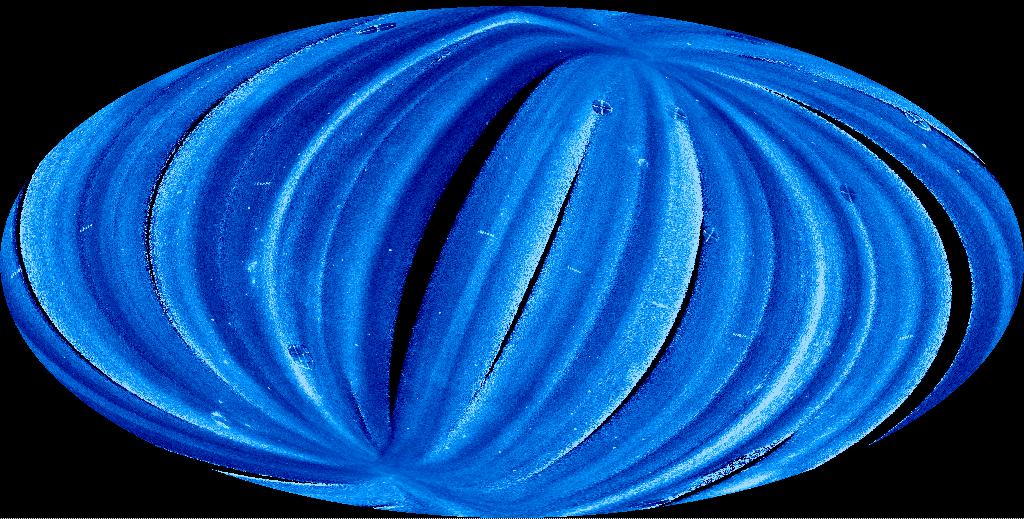
 Credit: EUVE/CEA/Berkeley
Credit: EUVE/CEA/Berkeley
The Extreme Ultraviolet Universe
The region of the
electromagnetic spectrum known as the "Extreme Ultraviolet" can provide
an enormous amount of information about physical processes in the cosmos,
since many important processes generate extreme ultraviolet radiation, and
because the amount of extreme ultraviolet radiation produced by an object
can alter the amount of radiation generated in other regions of the EM
spectrum. Unfortunately, nature is unkind, since neutral hydrogen (the most
abundant material in the universe) is extremely efficient at absorbing
extreme UV radiation. Thus, detection of extreme UV radiation requires
especially sensitive instrumentation, and relatively little hydrogen
between us and the source. We can't do anything about the latter, but the
former requirement was met by the Extreme
Ultraviolet Explorer (EUVE), a NASA mission designed and built at the
Space Sciences Laboratory at the University of California, Berkeley, under
the direction of Dr. Roger F. Malina. EUVE was launched on June 7, 1992.
The image above represents the extreme ultraviolet emission from the entire
universe as seen by EUVE. In addition to stellar objects, the Cygnus loop
and Vela supernova remnants are visible. The image was created by combining
EUVE scans of many small strips of the sky. These scans were taken during
the all-sky-survey portion of the EUVE mission. The black strips are data
gaps.
Last Week *
HEA Dictionary * Archive
* Search HEAPOW
* Education
Each week the HEASARC
brings you new, exciting and beautiful images from X-ray and Gamma ray
astronomy. Check back each week and be sure to check out the HEAPOW archive!
Page Author: Dr. Michael F.
Corcoran
Last modified June 14, 2001


